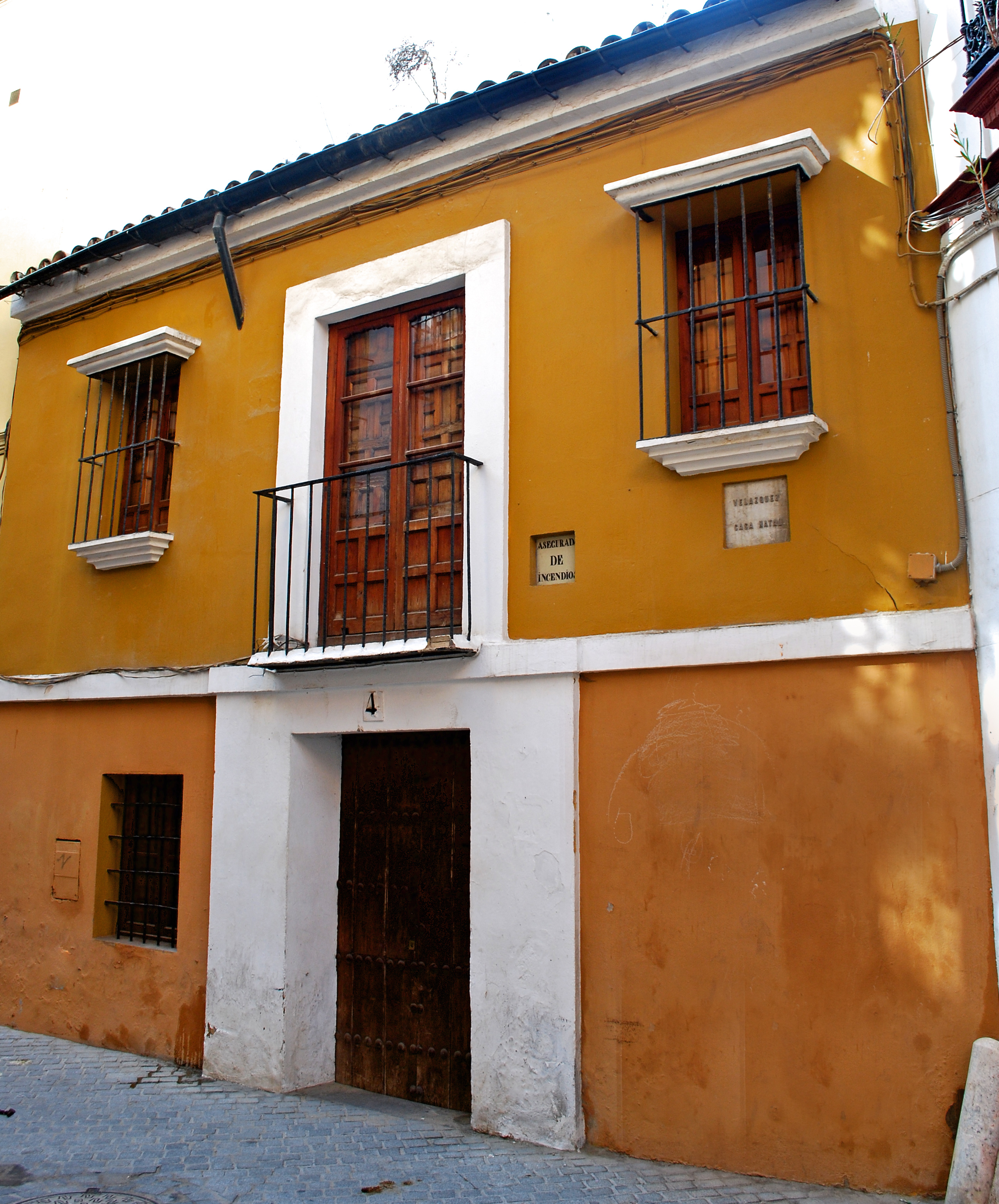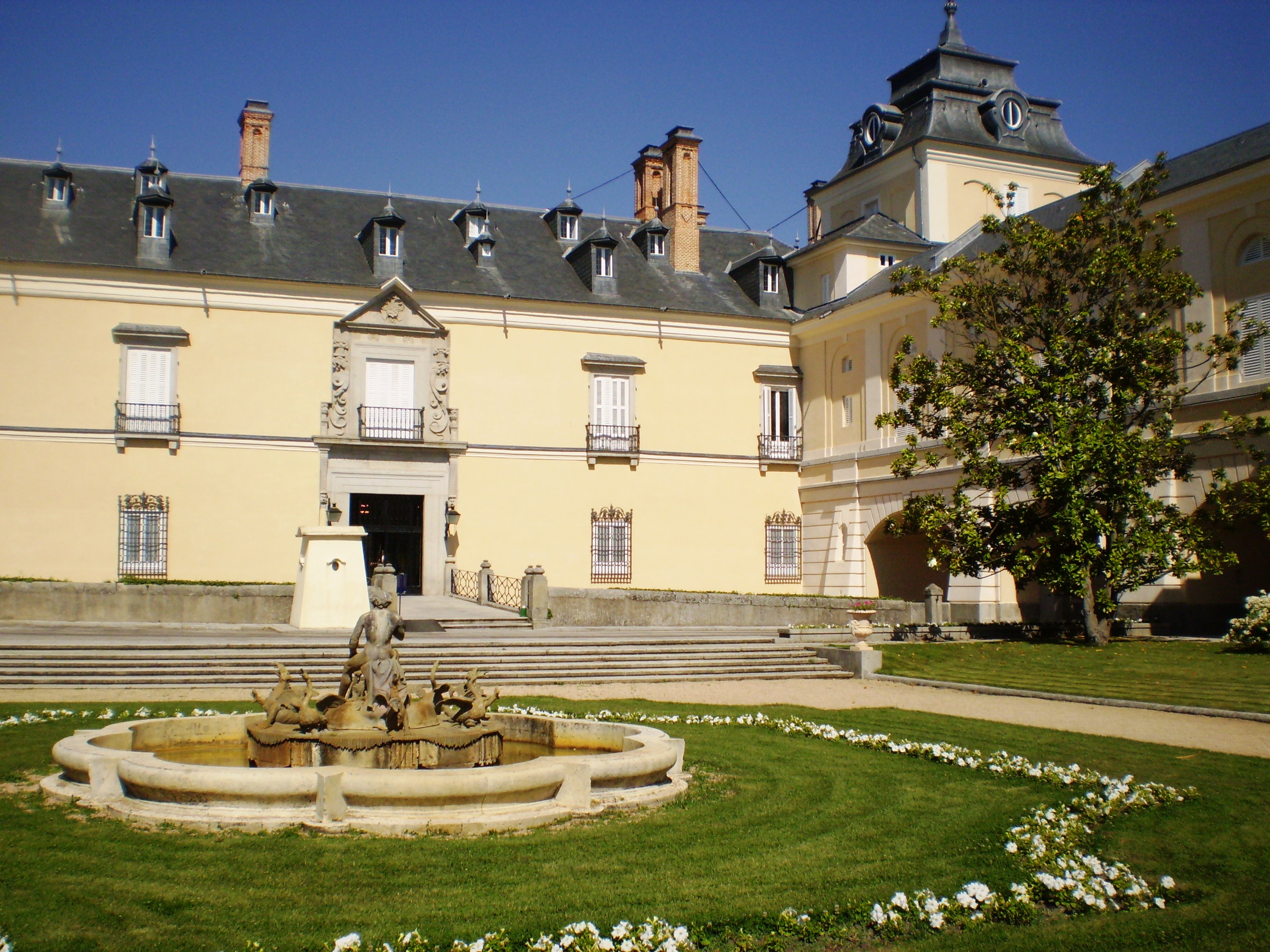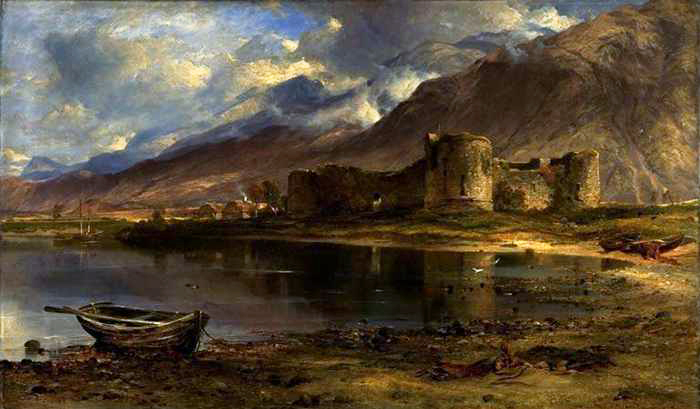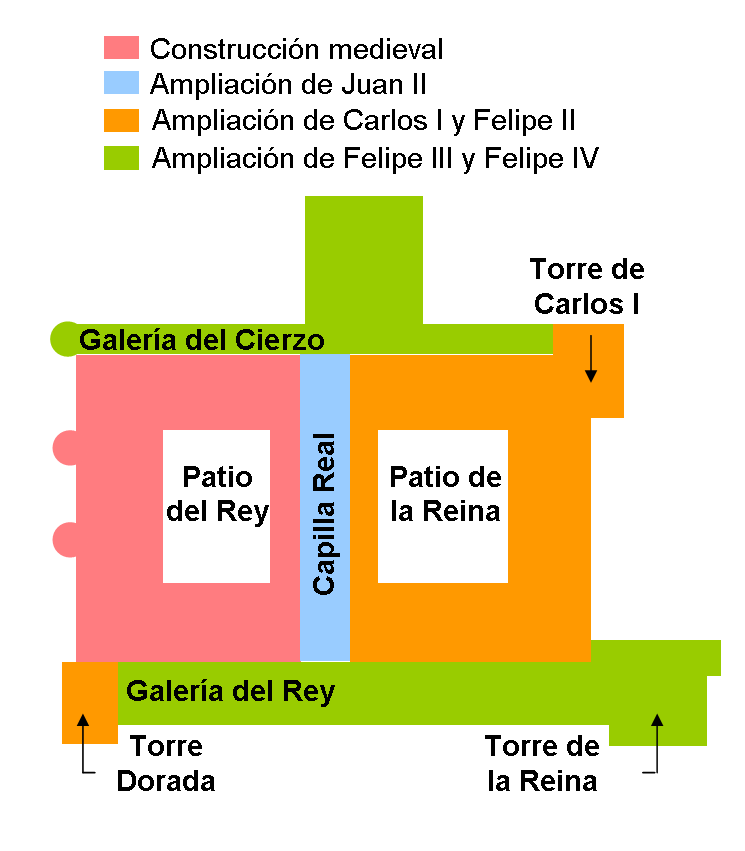|
Portrait Of Francisco Lezcano
''Portrait of Francisco Lezcano'' or ''The "Niño de Vallecas"'' is the 1645 portrait by Diego Velázquez of Francisco Lezcano (died 1649), also known as ''Lezcanillo'' or ''el Vizcaíno'', a jester at the court of Philip IV of Spain. It has been in the Prado since 1819. The mountains round Madrid can be seen in the right background, whilst the subject holds cards in his hands. The painting is part of a series of paintings of jesters at the court, and this one was possibly painted whilst the subject was accompanying the king on a hunt, since he is shown in hunting attire in the open air. It was produced for display in the Torre de la Parada (a hunting lodge on the outskirts of Madrid in the Sierra de Guadarrama near El Pardo). On 28 July 1714 it was moved to the Palacio del Pardo The Royal Palace of El Pardo ( es, Palacio Real de El Pardo, ) is one of the official residences of the Spanish royal family and one of the oldest, being used by the Spanish monarchs since En ... [...More Info...] [...Related Items...] OR: [Wikipedia] [Google] [Baidu] |
Diego Velázquez
Diego Rodríguez de Silva y Velázquez (baptized June 6, 1599August 6, 1660) was a Spanish painter, the leading artist in the court of King Philip IV of Spain and Portugal, and of the Spanish Golden Age. He was an individualistic artist of the Baroque period (c.1600–1750). He began to paint in a precise tenebrist style, later developing a freer manner characterized by bold brushwork. In addition to numerous renditions of scenes of historical and cultural significance, he painted scores of portraits of the Spanish royal family and commoners, culminating in his masterpiece ''Las Meninas'' (1656). Velázquez's paintings became a model for 19th-century realist and impressionist painters. In the 20th century, artists such as Pablo Picasso, Salvador Dalí, and Francis Bacon paid tribute to Velázquez by re-interpreting some of his most iconic images. Most of his work entered the Spanish royal collection, and by far the best collection is in the Museo del Prado in Madrid, thoug ... [...More Info...] [...Related Items...] OR: [Wikipedia] [Google] [Baidu] |
Palacio Del Pardo
The Royal Palace of El Pardo ( es, Palacio Real de El Pardo, ) is one of the official residences of the Spanish royal family and one of the oldest, being used by the Spanish monarchs since Enrique III in the 15th century. It is administered by the '' Patrimonio Nacional'' agency and it currently serves as a state guest house. Overview The palace began as a royal hunting lodge. It became an alternative residence of the kings of Spain until the reign of King Alfonso XII of Spain, who died in the palace in 1885. King Enrique III of Castile ordered the building of the pavilion in 1406, on Mount El Pardo, because of its abundant game. Later, in the time of Emperor Charles V (1547), it was transformed into a palace by the architect Luis de Vega. On 13 March 1604, a massive fire destroyed many of the paintings it housed, including masterpieces by Titian. King Carlos III of Spain renovated the building in the 18th century, appointing his architect Francesco Sabatini to under ... [...More Info...] [...Related Items...] OR: [Wikipedia] [Google] [Baidu] |
17th-century Portraits
The 17th century lasted from January 1, 1601 (Roman numerals, MDCI), to December 31, 1700 (Roman numerals, MDCC). It falls into the early modern period of Europe and in that continent (whose impact on the world was increasing) was characterized by the Baroque cultural movement, the latter part of the Spanish Golden Age, the Dutch Golden Age, the French ''Grand Siècle'' dominated by Louis XIV, the Scientific Revolution, the world's first public company and megacorporation known as the Dutch East India Company, and according to some historians, the General Crisis. From the mid-17th century, European politics were increasingly dominated by the Kingdom of France of Louis XIV, where royal power was solidified domestically in the civil war of the Fronde. The semi-feudal territorial French nobility was weakened and subjugated to the power of an absolute monarchy through the reinvention of the Palace of Versailles from a hunting lodge to a gilded prison, in which a greatly expanded royal ... [...More Info...] [...Related Items...] OR: [Wikipedia] [Google] [Baidu] |
1645 Paintings
Events January–March * January 3 – The Long Parliament adopts the ''Directory for Public Worship'' in England, Wales, Ireland and Scotland, replacing the Book of Common Prayer (1559). Holy Days (other than Sundays) are not to be observed. * January 10 – Archbishop of Canterbury William Laud is executed for treason on Tower Hill, London. * January 14 – English Civil War: Fairfax is appointed Commander-in-Chief. * January 29 – English Civil War: Armistice talks open at Uxbridge. * February 2 – Battle of Inverlochy: The Covenanters are defeated by Montrose. * February 15 – English Civil War: The New Model Army is officially founded. * February 28 – English Civil War: Uxbridge armistice talks fail. * March 4 – English Civil War: Prince Rupert leaves Oxford for Bristol. * March 5 – Thirty Years' War – Battle of Jankau: The armies of Sweden decisively defeat the forces of the Holy Roman Empire, in one of the ... [...More Info...] [...Related Items...] OR: [Wikipedia] [Google] [Baidu] |
Portraits Of Men
A portrait is a painting, photograph, sculpture, or other artistic representation of a person, in which the face and its expressions are predominant. The intent is to display the likeness, personality, and even the mood of the person. For this reason, in photography a portrait is generally not a snapshot, but a composed image of a person in a still position. A portrait often shows a person looking directly at the painter or photographer, in order to most successfully engage the subject with the viewer. History Prehistorical portraiture Plastered human skulls were reconstructed human skulls that were made in the ancient Levant between 9000 and 6000 BC in the Pre-Pottery Neolithic B period. They represent some of the oldest forms of art in the Middle East and demonstrate that the prehistoric population took great care in burying their ancestors below their homes. The skulls denote some of the earliest sculptural examples of portraiture in the history of art. Historical portraitur ... [...More Info...] [...Related Items...] OR: [Wikipedia] [Google] [Baidu] |
Portraits By Diego Velázquez In The Museo Del Prado
A portrait is a painting, photograph, sculpture, or other artistic representation of a person, in which the face and its expressions are predominant. The intent is to display the likeness, personality, and even the mood of the person. For this reason, in photography a portrait is generally not a snapshot, but a composed image of a person in a still position. A portrait often shows a person looking directly at the painter or photographer, in order to most successfully engage the subject with the viewer. History Prehistorical portraiture Plastered human skulls were reconstructed human skulls that were made in the ancient Levant between 9000 and 6000 BC in the Pre-Pottery Neolithic B period. They represent some of the oldest forms of art in the Middle East and demonstrate that the prehistoric population took great care in burying their ancestors below their homes. The skulls denote some of the earliest sculptural examples of portraiture in the history of art. Historical ... [...More Info...] [...Related Items...] OR: [Wikipedia] [Google] [Baidu] |
List Of Works By Diego Velázquez
This is a list of paintings and drawings by the 17th-century Spanish artist Diego Velázquez. Velázquez is estimated to have produced between only 110 and 120 known canvases. Among these paintings, however, are many widely known and influential works. All paintings are in oil on canvas unless noted. Seville (until 1622) Madrid (1622–1629) First trip to Italy (1629–1630) Madrid (1631–1648) Second trip to Italy (1649–1651) Madrid (1651–1660) Paintings of debated attribution Drawings Notes Sources * * * * * * * * * * * * * * * * * * * * * * * * * {{DEFAULTSORT:List of works by Diego Velazquez Paintings by Diego Velázquez, Lists of works of art, Velazquez ... [...More Info...] [...Related Items...] OR: [Wikipedia] [Google] [Baidu] |
Royal Palace Of Madrid
The Royal Palace of Madrid ( es, Palacio Real de Madrid) is the official residence of the Spanish royal family at the city of Madrid, although now used only for state ceremonies. The palace has of floor space and contains 3,418 rooms. It is the largest royal palace in Europe. The palace is now open to the public, except during state functions, although it is so large that only a selection of rooms are on the visitor route at any one time, the route being changed every few months. An admission fee of €13 is charged; however, at some times it is free. The palace is owned by the Spanish state and administered by the Patrimonio Nacional, a public agency of the Ministry of the Presidency. The palace is on Calle de Bailén ("Bailén Street") in the western part of downtown Madrid, east of the Manzanares River, and is accessible from the Ópera metro station. Felipe VI and the royal family do not reside in the palace, choosing instead the Palace of Zarzuela in El Pardo. The palace ... [...More Info...] [...Related Items...] OR: [Wikipedia] [Google] [Baidu] |
Infante
''Infante'' (, ; f. ''infanta''), also anglicised as Infant or translated as Prince, is the title and rank given in the Iberian kingdoms of Spain (including the predecessor kingdoms of Aragon, Castile, Navarre, and León) and Portugal to the sons and daughters (''infantas'') of the king, regardless of age, sometimes with the exception of the heir apparent or heir presumptive to the throne who usually bears a unique princely or ducal title.de Badts de Cugnac, Chantal. Coutant de Saisseval, Guy. ''Le Petit Gotha''. Nouvelle Imprimerie Laballery, Paris 2002, p. 303, 364-369, 398, 406, 740-742, 756-758 (French) A woman married to a male ''infante'' was accorded the title of ''infanta'' if the marriage was dynastically approved (e.g., Princess Alicia of Bourbon-Parma), although since 1987 this is no longer automatically the case in Spain (e.g., Princess Anne d'Orléans). Husbands of born ''infantas'' did not obtain the title of ''infante'' through marriage (unlike most hered ... [...More Info...] [...Related Items...] OR: [Wikipedia] [Google] [Baidu] |
Royal Palace Of El Pardo
The Royal Palace of El Pardo ( es, Palacio Real de El Pardo, ) is one of the official residences of the Spanish royal family and one of the oldest, being used by the Spanish monarchs since Enrique III in the 15th century. It is administered by the ''Patrimonio Nacional'' agency and it currently serves as a state guest house. Overview The palace began as a royal hunting lodge. It became an alternative residence of the kings of Spain until the reign of King Alfonso XII of Spain, who died in the palace in 1885. King Enrique III of Castile ordered the building of the pavilion in 1406, on Mount El Pardo, because of its abundant game. Later, in the time of Emperor Charles V (1547), it was transformed into a palace by the architect Luis de Vega. On 13 March 1604, a massive fire destroyed many of the paintings it housed, including masterpieces by Titian. King Carlos III of Spain renovated the building in the 18th century, appointing his architect Francesco Sabatini to undertake ... [...More Info...] [...Related Items...] OR: [Wikipedia] [Google] [Baidu] |
Museo Del Prado
The Prado Museum ( ; ), officially known as Museo Nacional del Prado, is the main Spanish national art museum, located in central Madrid. It is widely considered to house one of the world's finest collections of European art, dating from the 12th century to the early 20th century, based on the former Spanish royal collection, and the single best collection of Spanish art. Founded as a museum of paintings and sculpture in 1819, it also contains important collections of other types of works. The Prado Museum is one of the most visited sites in the world, and is considered one of the greatest art museums in the world. The numerous works by Francisco Goya, the single most extensively represented artist, as well as by Hieronymus Bosch, El Greco, Peter Paul Rubens, Titian, and Diego Velázquez, are some of the highlights of the collection. Velázquez and his keen eye and sensibility were also responsible for bringing much of the museum's fine collection of Italian masters to Spain, ... [...More Info...] [...Related Items...] OR: [Wikipedia] [Google] [Baidu] |
Sierra De Guadarrama
The Sierra de Guadarrama (Guadarrama Mountains) is a mountain range forming the main eastern section of the Sistema Central, the system of mountain ranges along the centre of the Iberian Peninsula. It is located between the systems Sierra de Gredos in the province of Ávila, and Sierra de Ayllón in the province of Guadalajara. The range runs southwest–northeast, extending from the province of Ávila in the southwest, through the Community of Madrid, to the province of Segovia in the northeast. The range measures approximately in length. Its highest peak is Peñalara, in elevation. The flora of the Sierra de Guadarrama are characterized in the higher elevation Atlantic vegetation region with Juniper groves, montane grasslands, Spanish broom thickets, pine forests, and Pyrenean Oaks forests; and in the lower elevation Mediterranean vegetation region by Holm oak forests. while the pastures around the summits are fringed by juniper and Spanish broom shrubs. The mount ... [...More Info...] [...Related Items...] OR: [Wikipedia] [Google] [Baidu] |








